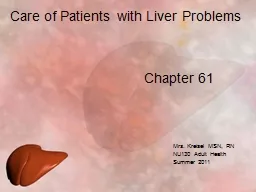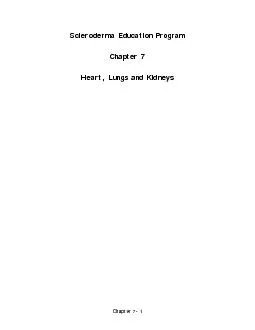PPT-Chapter 61
Author : cheryl-pisano | Published Date : 2017-07-08
Care of Patients with Liver Problems Mrs Kreisel MSN RN NU130 Adult Health Summer 2011 Cirrhosis Cirrhosis is extensive scarring of the liver usually caused by
Presentation Embed Code
Download Presentation
Download Presentation The PPT/PDF document "Chapter 61" is the property of its rightful owner. Permission is granted to download and print the materials on this website for personal, non-commercial use only, and to display it on your personal computer provided you do not modify the materials and that you retain all copyright notices contained in the materials. By downloading content from our website, you accept the terms of this agreement.
Chapter 61: Transcript
Download Rules Of Document
"Chapter 61"The content belongs to its owner. You may download and print it for personal use, without modification, and keep all copyright notices. By downloading, you agree to these terms.
Related Documents














